Search
Did you mean: Anjar?
Remove Ads
Advertisement
Summary 
Loading AI-generated summary based on World History Encyclopedia articles ...
Search Results
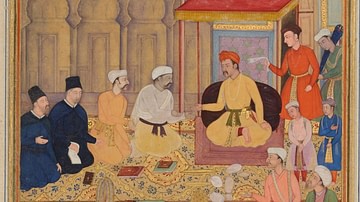
Definition
Ibadat Khana
The House of Worship or the Ibadat Khana was established by Mughal Emperor Akbar (1542-1605 CE) for conducting religious debates and discussions among theologians and professors of different religions. Abu'l-Fath Jalal-ud-din Muhammad Akbar...
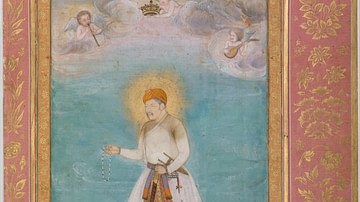
Image
Akbar with a Lion and a Calf
"Akbar With Lion and Calf", Folio from the Shah Jahan Album Painting by Govardhan Calligrapher Mir 'Ali Haravi verso: ca. 1630; recto: ca. 1530–50 This portrait of Akbar from the Shah Jahan album by Govardhan depicts a lion and a calf...

Image
Akbar in the Ibadat Khana
Mughal emperor Akbar is seen holding a religious assembly in the Ibadat Khana (House of Worship). Two Jesuit missionaries in black robes are identified as Rudolfo Acquaviva and Francisco Henriques. Illustration to the Akbarnama, miniature...
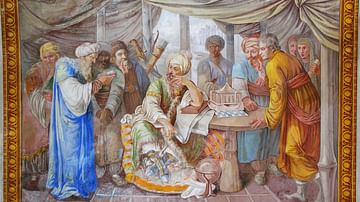
Image
The Court of Akbar
The court of Mughal Emperor Akbar (r. 1556–1605 CE). The man in the yellow robe is identified as Rodolfo Acquaviva.
Painting by an unknown artist, 1847 CE.
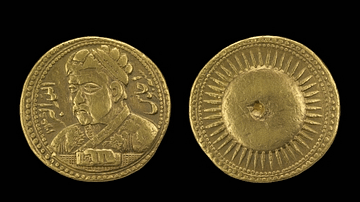
Image
Mughal Gold Coin of Emperor Akbar
A gold mohur coin issued by Mughal Emperor Jahangir (r. 1605-28) bearing a portrait of his Father, Akbar. The coin was issued in 1605, the first year of Jahangir's reign. The inscription in Arabic next to the portrait translates as 'Allahu...
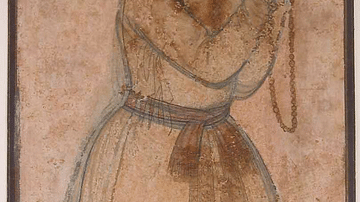
Image
Portrait of Emperor Akbar Praying
Portrait of Emperor Akbar Praying, ink and opaque watercolor on paper, early 17th century, India.
The Metropolitan Museum of Art, New York City.
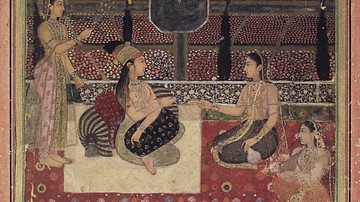
Definition
Urdubegis
The urdubegis were a group of female warriors in the Mughal Empire, who protected the zenana, the harem of the emperor. Although the origins of female bodyguards go back to the beginning of Indian civilizations, the urdubegis were a Mughal...

Article
Mandu - City of Joy
The city of Mandu is situated about 35 km from Dhar in the Madhya Pradesh region of northern-central India. Most of the city's monuments date to the 15th and 16th century CE. The city is located on a hill which rises 633 m above the sea level...
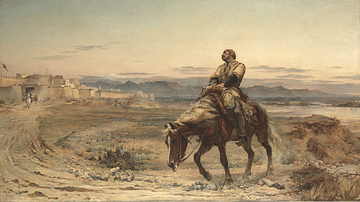
Article
Retreat from Kabul in 1842
The Retreat from Kabul in 1842 was one of the most notorious disasters in the history of the British Empire. An East India Company army had invaded Afghanistan but was obliged to withdraw. This army of 4,500 soldiers and 12,000 camp followers...

Definition
First Anglo-Afghan War
The First Anglo-Afghan War (1838-42) was fought between the British East India Company (EIC) and, the Emirate of Afghanistan, the ultimate victor. The British were keen to control Afghanistan as they feared Russian expansion into South Asia...